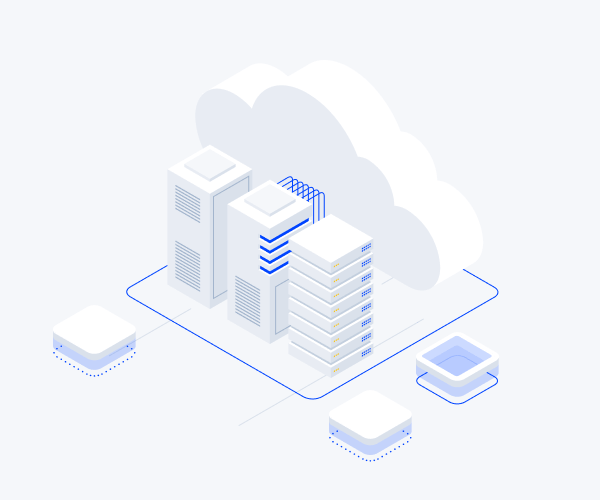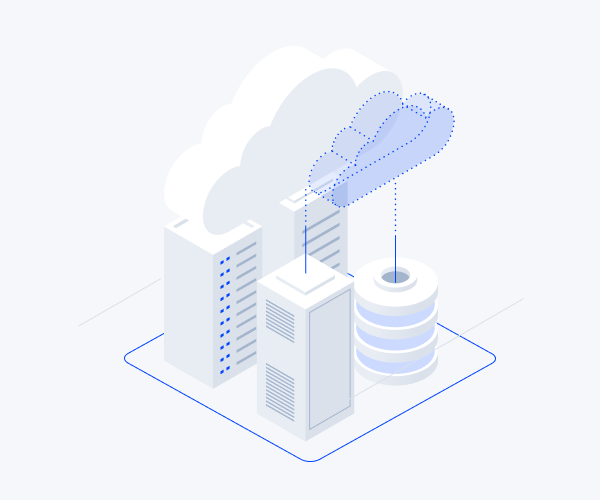Is cloud computing the future?

Explaining the benefits, economics and cloud computing prospects
Over the past 10 years, cloud computing has significantly changed the business processes in companies. The most obvious example is document and file collaboration, which has moved entirely online. Cloud has accelerated digital transformation, with companies actively using web applications to automate processes and manage teams.
Analytics migrated to the clouds. Now the tasks associated with processing data large amounts and machine learning cannot be solved without virtual servers and high-capacity cloud storage systems.
The cloud infrastructure has become a staple for entertainment content providers. For example, Netflix migrated to the cloud back in 2015. The service is constantly evolving, many new resource-intensive functions appear, data volumes are increasing. With the cloud elasticity, Netflix adds virtual servers and storage petabytes thousands in minutes.
The whole world is switching to consumption by subscription - from content to email newsletters. Computing resources are no exception: a cloud service consumer, such as virtual infrastructure, can always unsubscribe or change the tariff.
What is cloud computing
Cloud computing is the computing resources provision on-demand over the Internet. Resources can be servers, storage systems, data networks, software, platform services.
Cloud service providers distribute computing resources among different customers. Each of the customers receives the capacities or services required a pool, which is scaled if necessary.
Financially, cloud computing is convenient for the consumer in that:
- there are no capital costs for own equipment and premises for it - only operating;
- the service is paid upon use, for example, for the resources allocated amount resources or for the used capacity for a certain period;
- the resources amount increases or decreases when the need arises, that is, there is no problem with equipment or service downtime.
How the cloud market works
The demand for cloud computing is growing every year. According to analytical agency Gartner, the global market for public cloud services will reach $ 308.5 billion in 2021. This is $ 40 billion more than in 2020 and 90 billion more than in 2019.
Gartner also notes that cloud computing has become a necessary catalyst for innovation for businesses. Analysts recommend that IT leaders continually adapt their IT strategy to suit the cloud.
According to the agency forecasts, in 2021, more than international companies half will apply an integrated cloud strategy, when the local infrastructure in their own data centres will expand and develop using cloud resources.
Where cloud computing is used
In the corporate sphere, cloud computing covers a services wide range - from virtual infrastructure (Infrastructure as a Service, IaaS) to enterprise applications (Software as a Service, SaaS). Thanks to the clouds, service services that employees previously only got in the office using a work PC are now accessible from anywhere with an Internet connection.
Clouds are used in almost all high-tech industries: in software development, in projects based on IoT, for big data analysis, etc. There are also more highly specialized tasks that are solved in the cloud, for example, real-time speech processing using artificial intelligence.
What are the clouds' advantages
There are seven main advantages:
- You don't need to buy and maintain your own IT infrastructure: equipment, services, OS and other software.
- You don't have to think about upgrading and upgrading your hardware and OS - the cloud provider does it.
- The burden on full-time IT specialists is reduced because the provider takes on most of the infrastructure support tasks.
- With cloud computing help, you can test projects without large start-up costs, increasing or decreasing leased resources when the need arises.
- Infrastructure and services in the cloud are deployed quickly, as opposed to a traditional approach that involves purchasing hardware and software.
- The previous point consequence: a company can bring new products to the market faster than competitors who use their infrastructure.
- Resources scale quickly — for example when an application gains popularity and the user base grows.
What the experts think
Lee James, hosting provider Rackspace CTO, believes that the cloud computing future is multi-cloud (or hybrid cloud), a model that involves using multiple clouds from different providers at the same time. James, firstly, connects this with the general growth in popularity of public clouds: 81% of companies use them in one way or another. Secondly, with the Kubernetes containerized application system growing popularity, which is convenient to use in a multi-cloud.
At the same time, Lee James notes, many companies are still investing in private cloud solutions, preferring them to public ones. Private clouds have more options for customizing and securing infrastructure.
Stephan Fabel, Chief Product Officer at Canonical, believes that the cloud is the best choice for IT infrastructure for startups. Companies that start businesses on a tight budget, Fabel says, require an environment to experiment with the latest technology. A public cloud is best suited for this.
Patrick O'Keeffe, Development at Quest VP, is cautious about predicting a move to the cloud. O'Keefe believes that for many companies, the full transition to cloud infrastructure has been a frustration, primarily due to the high operating costs and public clouds flexibility lack. Therefore, the expert says, such companies may move to hybrid clouds.
What's new in cloud computing
We note three new areas that are expanding the cloud computing scope. These directions are more correctly considered trends, because they are not yet used as widely as, for example, cloud storage systems.
Things Internet (IoT). The devices (things) number connected to the Internet is growing: smartphones, TVs, smartwatches, household appliances, systems such as smart home sensors, smart city and more. All these devices exchange information with each other or with the control software, and often without human intervention. The further, the more IoT turns into an autonomous system - the Internet within the Internet - that accumulates data huge amounts in real-time.
Gartner predicts 25 billion IoT devices will be connected to the Internet in 2021. The cloud is an ideal infrastructure for IoT because it provides unlimited storage space for the information it collects, as well as high availability, performance, and scalability.
Serverless Computing. This type of Platform as a Service (PaaS) is becoming increasingly popular in software development. The customer does not have to worry about the server hardware and OS administration: computing resources are scaled automatically as the load grows or decreases.
An example of such services is AWS Lambda, a platform that works on the event-driven computing principle: the resources required pool is allocated in milliseconds in response to an event - for example, when a new code module is added.
Quantum computing. Quantum computers are the next step in the traditional supercomputers' evolution. Such computers are planned to be used primarily for working with large amounts of data. At the same time, both data and computing resources themselves (qubits) can be placed in the cloud.
In 2019, IBM made it's a quantum computer available as a cloud service. Anyone can connect to the machine and run their experimental programs.
What professions are relevant for the cloud industry
TechRepublic marks 15 most in-demand cloud computing careers based on job market analysis. The first three places in demand decreasing order are occupied: software engineer, software architect and DevOps engineer. Last on the list is a backend developer.
Why cloud computing is the future
- Speed and flexibility. Traditional infrastructure is not good at coping with the market change speed. It usually takes weeks or months to allocate the right resources. Cloud resources can be obtained in less than an hour and the required amount.
- Innovation. To stay competitive, a company needs to quickly develop new products and services, assess their market potential, and implement them. Cloud computing is in this sense more efficient than on-premises IT infrastructure.
- Savings. The company that leases cloud resources only bears the operating costs. Predictable pricing helps you plan your IT budget.
- Fault tolerance. For cloud providers, client services resiliency high level is a must because many clients pay attention to SLA first. Competition between suppliers forces them to improve infrastructure quality and reliability.





